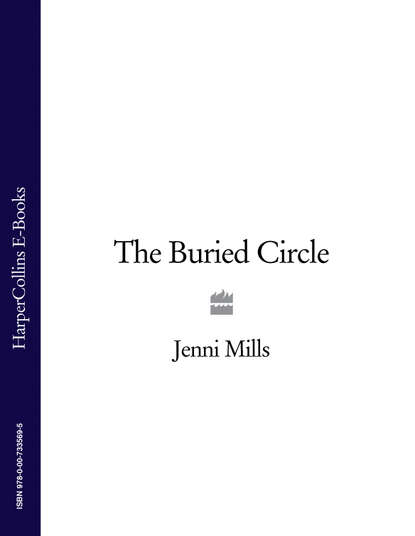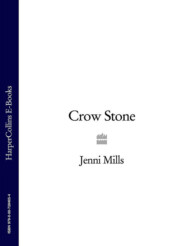По всем вопросам обращайтесь на: info@litportal.ru
(©) 2003-2024.
✖
The Buried Circle
Автор
Год написания книги
2018
Настройки чтения
Размер шрифта
Высота строк
Поля
This time both Corey and the woman snort.
During my lunch hour, I cross the cobbles to the museum. Chris, at the till, raises his eyebrows. I hand him a mug of hot chocolate: bribery. ‘OK if I go upstairs?’ I ask. ‘More research for those telly people.’
‘Does the curator know?’
‘Checked with her this morning. She said to go ahead.’
He gives me the nod.
Upstairs, I pull on a pair of blue vinyl gloves to leaf through the photo albums. The first item on Daniel Porteus’s list is Destruction of Village. Doesn’t take me long to find the pictures at the start of the 1938 album: black-and-white stills of brawny workmen, braces and cloth caps, fragments of wall and thatch, homes that look as if someone dropped a bomb on them.
Grandfather or no, Keiller really was a bastard.
PART THREE Equal Night (#ulink_1ff4c5ae-1672-572b-bc99-12b8f55b5800)
And that this place may thoroughly be thought True Paradise, I have the serpent brought.
John Donne, Twicknam Garden
Let us be clear: there were no Druids at Avebury until the present day. Druids were a Celtic priesthood (and later a nineteenth-century reinvention) and Avebury fell into disuse long before the Celts arrived in Britain. Indeed, one of its most remarkable aspects is that no Iron Age artefacts at all have been found within the henge. Perhaps people steered clear of the circle at that point in time. So we can safely say that it is highly unlikely that Alban Eiler, the Celtic spring festival, was ever celebrated there during the Druids’ heyday.
Having said that, most cultures celebrate a spring festival at or about the time of the vernal equinox. Certainly some Neolithic monuments–the passages in the tomb at Knowth, in Ireland, for example–seem to be aligned to sunset and sunrise at the equinox (literally, ‘equal night’), on 20/21 March. There doesn’t appear to be any such alignment at Avebury: but that is not to say categorically there was not one. Keiller never finished his reconstruction, and we have an incomplete picture of the other settings–the Cove, the inner circles and the stone row–that lay inside the main circle.
So when today’s Druids meet to observe Alban Eiler, they could indeed be following a tradition observed through the ages at Avebury. The sun god meets the awakening spring goddess, Eostre–from whose name we derive both ‘Easter’ and ‘oestrogen’. Sap rises, green things stir, the life force returns to the earth.
Dr Martin Ekwall,
A Turning Circle: The Ritual Year at Avebury, Hackpen Press
CHAPTER 12 1938 (#ulink_c1c37b19-3277-5e38-a419-e2e91195aaa9)
You can’t help who you fall for, can you?
To begin with I hardly saw Mr Keiller at the Manor. He was always somewhere else. Up and down to London, or off to Scotland. Most of the time we didn’t know where he was.
‘He’ll be skiing,’ said Cook, hopefully, if we hadn’t seen him for three or four days. He’d been a champion when he was younger, and at one time trained the British ski-jump team. But, no, he’d turn up late that very evening, with guests, demanding supper at midnight.
Mrs Sorel-Taylour had introduced me, suitably Kirby-gripped, on my first day. ‘This is Miss Robinson, who’ll be helping with the cataloguing.’
He was in the Map Room, sitting on a high draughtsman’s stool, looking at some photographs laid out under an Anglepoise lamp. Its light was the only splash of brightness. Everything in there was brown–velvet curtains, window seats, carpet. Even the walls were covered in brown leather.
He turned to inspect me, but I don’t think he was much interested by what he saw, a fifteen-year-old girl in a cheap jacket-and-skirt costume, with finger-waved hair and a scrubbed country face. ‘Do you write clearly?’ You could hear the w in write.
‘Very,’ said Mrs Sorel-Taylour, before I could open my mouth. ‘That’s why I took the child on.’ Did I imagine that tiny stress on ‘the child’? ‘She will, of course, be under my direct supervision.’
‘Good,’ he said. He was bored already, wanting to return to his pictures. The one on top was strange, but familiar too. It took a moment to work it out, then I saw it was a photograph of Avebury from the air. It had been taken late in the day because the shadows were long.
He must have been watching my face. ‘You recognize it.’ The soft upper-class w sound again, instead of the r.
‘I can see our guesthouse. There.’
‘Ah, that Robinson. I thought I’d seen you before.’ I could smell the oil on his sandy brown hair, sweet and spicy. The parting, on the right, was straight as a metal rule, the hair slicked back from a high, smooth forehead. ‘Do you know who you’re descended from?’
‘The monkeys, my mam says.’
He laughed. ‘The biggest monkey round here in the eighteenth century was Tom Robinson. They called him Stonebreaker Robinson, because he destroyed so many of the stones from the circle–broke them up for building material and road surfacing. Did you know that?’
‘No, sir.’
‘It seems to me entirely appropriate that we should put a Robinson to labour setting right what he destroyed. You shall serve your time in the museum on his behalf.’ He had a habit of dipping his chin and crinkling up his eyes when he smiled. ‘Of course, you might not be descended from him, but we shall never know, shall we? So I shall always assume you are and, on high days and holidays, give you twenty strokes of the lash as additional penance.’
I looked helplessly at Mrs Sorel-Taylour. Her mouth was a tight red seam.
Mr Keiller turned back to his photograph but his eyes stayed crinkled and happy, a smile rippling round his mouth.
Big crates arrived from London, full of what Mam called ‘stuff’. So many bits of broken pot and flakes of stone that Mr Keiller had dug up from Windmill Hill when he’d come there in the 1920s, or from Mr Peak-Garland’s fields when he’d rebuilt the Avenue that leads up to the circle. Not to mention the bits and pieces they found from the circle itself in the last year, when they started putting back the stones. It was all stuff to me, too, to begin with, but after a bit what the archaeologists say starts to sink in, so you see how a sliver of flint has a serrated edge that some old fellow chipped there five thousand years ago, or the pattern of nibble marks on a piece of pot jabbed into the clay by an ever-so-patient woman with a tiny bird bone.
We didn’t unpack it–that was a job for the men. All of them used to wear these dark green blazers, like a sports team, with a badge on the breast pocket that said MIAR: Morven Institute of Archaeological Research, after Mr Keiller’s family home in Scotland. At first it made them hard to tell apart at a distance, but it didn’t take long to sort out who was who. There was Mr Young, Mr Keiller’s foreman, small-built, lean and leathery-skinned from the last season, who’d been promoted to supervise the museum. He wasn’t posh like the others, and he had a proper Wiltshire accent, but he’d worked with Mr K for years, and Mr K always listened to his opinion. He was friendly but a bit shy around me, and Mrs Sorel-Taylour said he was awkward with women, never been married. But it was the two younger ones I saw most of: dark, heavy-browed, big-nosed Mr Piggott, who treated me like I wasn’t there, most of the time, and Donald Cromley, the taller, good-looking fellow whose light brown hair used to flop over one eye because he didn’t oil it back.
They would take out each piece from the crates and try to find it in the notes, which had always got lost or separated, then argue over what it was. Once or twice I half expected them to come to blows. Mr Piggott was the older of the two, and the more experienced, though sometimes he behaved like an overgrown schoolboy, but Mr Cromley was the clever young puppy snapping at his better’s heels. Mrs Sorel-Taylour and I had to sit there writing everything down, and later type it all up. When she was satisfied I really did write neatly, she let me do the labels to go with the exhibits in the glass and mahogany cases.
We were in the museum one morning when Mr Cromley dipped his hand into the crate, and Mr Piggott started to giggle when he saw what he’d come up with. ‘You know, Donald, the Americans have an expression,’ he said, ‘which we could adapt for this occasion. “Happy as a Don with two…’”
Mrs S-T shot them a disgusted glance. ‘Gentlemen. Please remember there are ladies present.’
‘She’s a country girl,’ said Mr Piggott. ‘She knows what it is. Don’t you, Miss Robinson?’ The first time, I think, he’d ever addressed me by name.
Of course I knew. Didn’t stop my cheeks being on fire, though. Mr Cromley placed the chalk doo-dah on the table where he had been laying out the finds. It was about four inches long, rough carved, with a bulging knobble at the end.
‘Not amazingly impressive,’ said Mr Piggott, with a scornful twist of his thick dark eyebrows.
‘Ah, but I have four of them,’ said Mr Cromley, delving into the crate, and the pair of them burst out laughing again.
‘Where did they come from?’ I asked, provoking more hoots and snuffles.
‘These are from Windmill Hill,’ said Mrs Sorel-Taylour. ‘I’m sorry, Frances, you’ll have to become used to this sort of thing.’
‘Regeneration,’ said Mr Cromley, recovering himself sudden-like. ‘That’s what ceremonies at Avebury would have been about, in all probability. They may have been left as offerings to the gods. Or the priest may have strapped on a chalk phallus for the ritual.’
‘He never wore one of those!’ I exclaimed. ‘What would he have done with it?’
Mr Piggott went so brick-coloured I thought he’d explode with trying not to laugh. But Mr Cromley pushed back his hair and gave me a look that was almost respectful. ‘That’s actually a very good question.’
‘But not one we should waste time answering this morning,’ said Mrs Sorel-Taylour, briskly. ‘It’s nearly Miss Robinson’s lunch break, and there are at least half a dozen finds in that crate you haven’t begun to look at.’
At twelve thirty exactly Mrs Sorel-Taylour would send me off for lunch, and usually I’d wander across the cobbles to the barn in the hope of finding Davey polishing one of the cars. He wasn’t often there. He’d be on the road, maybe driving Mr Keiller to some dinner in Mayfair, or fetching more boxes of stuff from Charles Street where Mr K had his London house.
Today I wasn’t sure if I was glad or not there was no sign of him. I kept thinking of the great big chalk thing Mr Keiller had been carrying the night Davey and I watched the ceremony in the garden. Whatever had he done with it when they disappeared between the box hedges?






